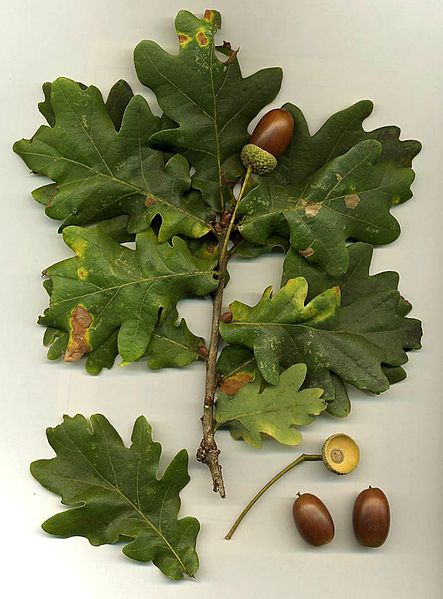It is a deciduous tree growing to 20–30 m tall with a trunk up to 1.5 m diameter, and a broad, rounded crown. The bark is grey-brown and shallowly grooved; unlike many other maples, mature trees do not tend to develop a shaggy bark. The shoots are green at first, soon becoming pale brown; the winter buds are shiny red-brown. The leaves are opposite, palmately lobed with five lobes, 7–14 cm long and 8–20 cm (rarely 25 cm) across; the lobes each bear one to three side teeth, and an otherwise smooth margin. The leaf petiole is 8–20 cm long, and secretes a milky juice when broken. The autumn colour is usually yellow, occasionally orange-red. The flowers are in corymbs of 15–30 together, yellow to yellow-green with five sepals and five petals 3–4 mm long; flowering occurs in early spring before the new leaves emerge. The fruit is a double samara with two winged seeds; the seeds are disc-shaped, strongly flattened, 10–15 mm across and 3 mm thick. The wings are 3–5 cm long, widely spread, approaching a 180° angle. It typically produces a large quantity of viable seeds. It is not particularly a long-lived tree, with a maximum age of around 250 years.
The wood is hard, yellowish-white to pale reddish, with the heartwood not distinct; it is used for furniture and turnery.
Many cultivars have been selected, with distinctive leaf shape or coloration such as the dark purple of 'Crimson King' and 'Schwedleri', the variegated leaves of 'Drummondii' and 'Emerald Queen', and the deeply divided, feathery leaves of 'Dissectum' and 'Lorbergii'. The purple-foliage cultivars have orange to red autumn colour. 'Columnare' is selected for its narrow upright growth.
It has been widely placed into cultivation in other areas, including western Europe northwest of its native range. It grows north of the Arctic Circle at Tromsø, Norway. In North America, it is grown as a street and shade tree as far north as Anchorage, Alaska. It is favoured due to its tall trunk and tolerance of poor, compacted soils and urban pollution.
It is becoming a popular species for Bonsai in Europe and is used for medium to large Bonsai Sizes and a multitude of Styles.
***************
Sycamore Maple [Acer pseudoplatanus] is a species of maple native to central Europe and southwestern Asia, from France east to Ukraine, and south in mountains to northern Spain, northern Turkey, and the Caucasus. In Scotland, the Sycamore is known as the Plane tree, although it is not a member of the Platanus genus. Its apparent similarity to the plane led to its being named pseudoplatanus, using the prefix pseudo- (from the Ancient Greek for "false").
It is a large deciduous tree that reaches 20–35 m tall at maturity, with a broad, domed crown. On young trees, the bark is smooth and grey but becomes rougher with age and breaks up in scales, exposing the pale-brown-to-pinkish inner bark. The leaves are opposite, 10–25 cm long and broad with a 5–15 cm petiole, palmately veined with five lobes with toothed edges, and dark green in colour; some cultivars have purple-tinged or yellowish leaves. The leaves are often marked with black spots or patches which are caused by the fungus Rhytisma acerinum. The monoecious yellow-green flowers are produced in spring on 10–20 cm pendulous racemes, with 20-50 flowers on each stalk. The 5–10 mm diameter seeds are paired in samaras, each seed with a 20–40 mm long wing to catch the wind and rotate when they fall; this helps them to spread further from the parent tree. The seeds are mature in autumn about 6 months after pollination.
A number of species of Lepidoptera use the leaves as a food source; see Lepidoptera that feed on maples.
The pioneer cut trunks of great dimension into cross-sections which he then bored through the center, to make primitive solid wheels for his ox cart. If the trunk was hollow, as it often was, he sawed it in lengths of three to four feet, nailed a bottom in it and so had a stout hogs-head for grain.
Other early uses included barber poles, wooden washing machines, lard pails, Saratoga trunks, piano and organ cases and phonograph boxes, according to Culross Peattie. The wood was also used for broad paneling in Pullman train cars.
An infusion of the inner bark was taken by Native Americans to treat dysentary, cough, and measles.























































